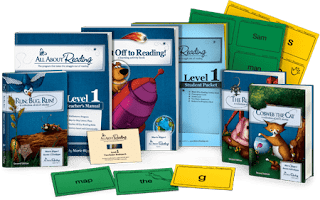Why Multisensory Works
Why Multisensory
Works
Every
person learns in their own unique way. So why do school expect students to learn
in the same way?
You
might be thinking, what is multisensory?
Multisensory
is an approach to teaching that gives students the opportunity to learn from
more than ones sense. These senses would be seeing, hearing, moving and
touching. And for me as a teacher this equates to hear it, see it, say it,
build and/or write it.
The
multisensory approach relates to Howard Gardner’s theory of multiple
intelligence. Which categorizes “intelligence” into 9 different categories spatial,
naturalistic, musical, logical-mathematical, existential, interpersonal,
bodily-kinesthetic, linguistic, and intra-personal. This theory supports the idea that different people
learn in different ways, and show their “intelligences” through different
avenue of interest and expertise. For example a therapist and a famous musician
would both be intelligent but would have different areas of expertise and
probably different preference for learning.
How
can Multisensory teaching help learning?
Through
life experiences you have probably seen that different people are good at
different things. Different skills come easier to different people. My brother
was always better at reading than I even though I was 3 years older.
Most
people would support the idea that all people are capable of learning, just
different people learn in different ways. For example when I am listening to a
lecture I need to take notes. My mind holds on to the information better if I
am writing and listening.
When
I have given students experiences to do reading, writing and math activities
with a multisensory approach, I have seen growth. Teaching in a multisensory
way gives students more than one way to learn a concept. Much of school is
listening to the teacher, and doing a worksheet to show what you know.
A multisensory
approach has been proven to help support students learn especially with reading
problems.
What
does multisensory look like?
Multisensory
learning looks like a busy classroom. Students are moving, they are saying
things, and they are writing/building and hearing the content.
The
professional development training GLAD
incorporates many multisensory strategies. GLAD incorporates the following:
·
Singing (hearing,
moving and saying)
·
Visual posters
and charts (seeing)
·
Choral reading/response/echo
(hearing and saying)
·
Organizing visuals
(touching and seeing)
The Wired for Reading training also
offers many great multisensory strategies for teaching reading and writing. The
Wired for Reading approach was created to help students with Dyslexia. It is
estimated that 1 in 5 students has dyslexia. Some of the multisensory strategies
this program promotes is:
·
Visuals (seeing)
·
Stories (hearing
and seeing)
·
Moving sound
cards (seeing, hearing, saying, touching)
An example of a curriculum I have used that incorporates
a multisensory approach is the All
About Reading Level 1 curriculum by Marie Rippel. Their website states it uses
a “multisensory
instruction so kids can decode words instead of guessing.”
This curriculum has students start by building new
patterns and words with magnets, they build, see and say the words and patterns. The
program also has color coded flash cards for word patterns and words, where
students see the word, hear the word and say the word. Sight words are rarely introduced,
this program focuses on sounding out as many words as possible and only introducing
sight words that truly need to be memorized by sight. The students practice
reading words, phrases and sentences before jumping into reading the text.
Before the students are given the book to read they
have had opportunities to see, hear,
build and say the words. Check out my full review of this curriculum here.
Marie Rippel also has a multi-sensory spelling program
All About
Spelling that will be reviewed in the future.
 |
Building with the All About Reading/ All About Spelling letter tiles. The student is given a word, they build the word, read the word, and see the word |
A curriculum isn’t necessary but is helpful when implementing
a multisensory approach. See my suggestions below for what I would use to incorporate
multi-sensory learning into reading, writing and math.
Reading
|
Writing
|
Math
|
·
Flash cards
·
Building words with magnets
·
Choral reading
·
Color coding
·
Tapping out sounds
|
·
Sorting words
·
Graphic organizer – color code
·
Spell words outload
·
Mentor texts
·
Dictation
·
Air writing
·
Writing in shaving cream
|
·
Manipulatives
·
Choral responses
·
Visual examples of process
|
*please note that many
of the above examples for reading and writing could be used interchangeably.
 |
| Integer Block kit, Manipulative example from the Math U See curriculum. With physical blocks students are able to see, move, touch and say/hear. |



Comments
Post a Comment